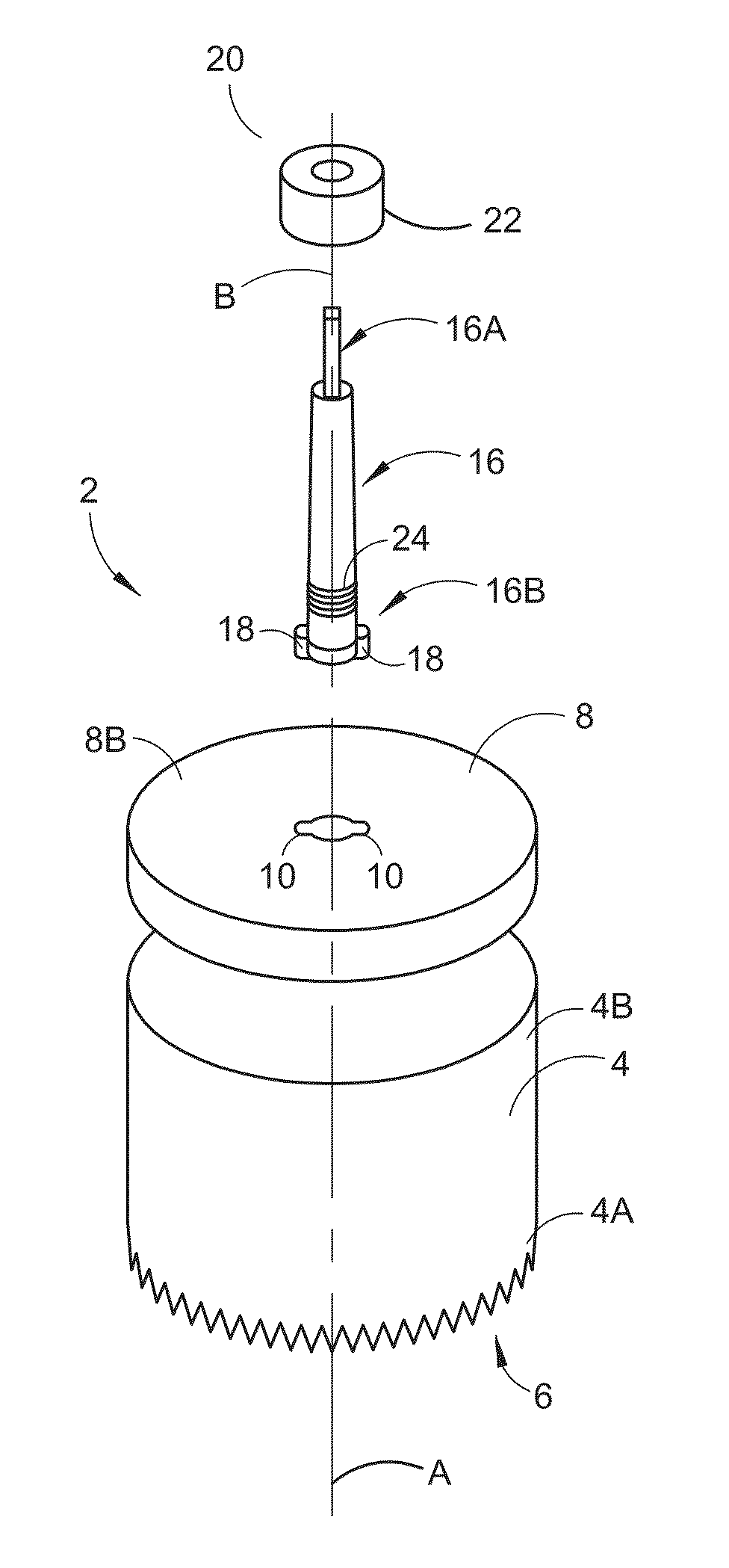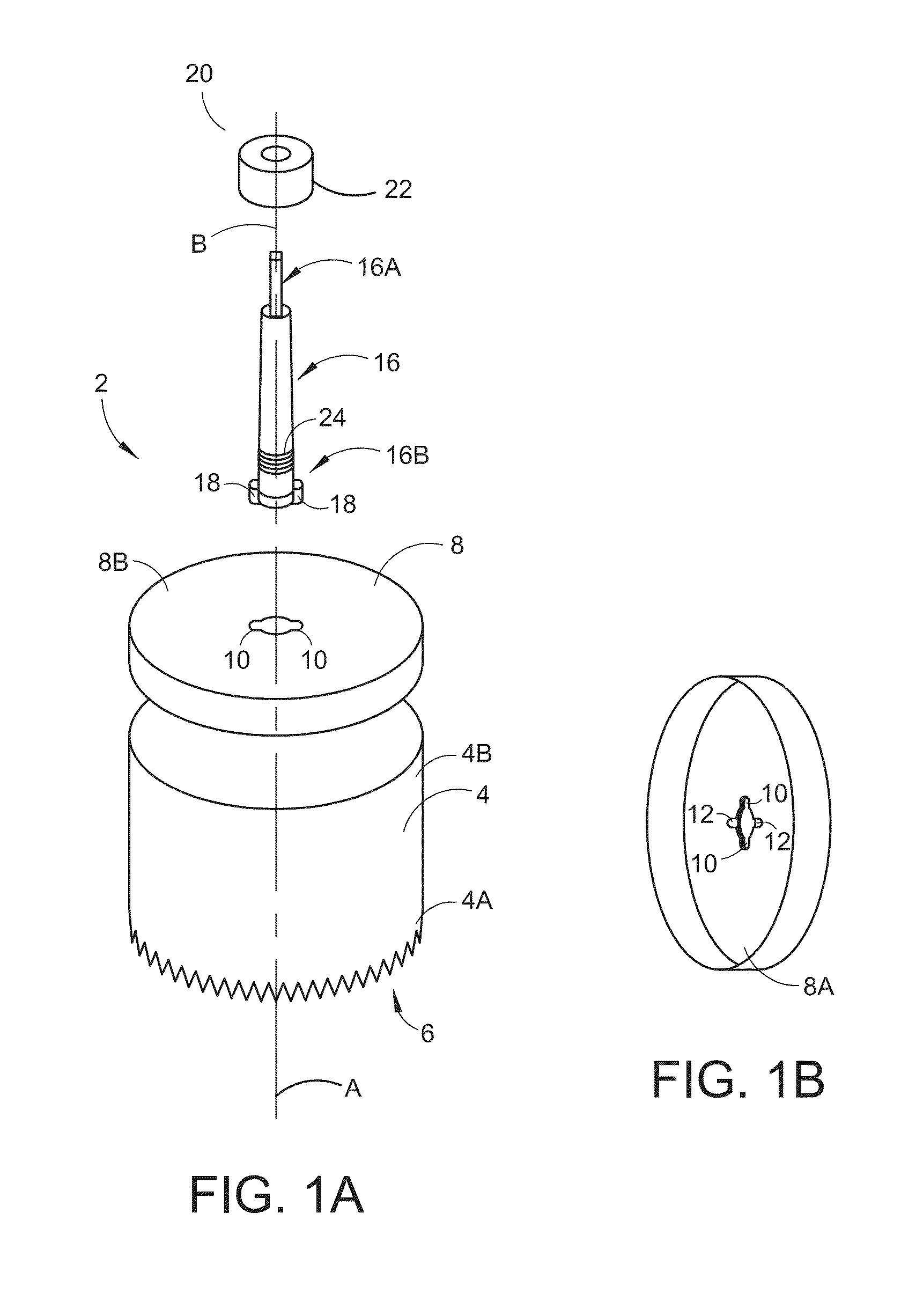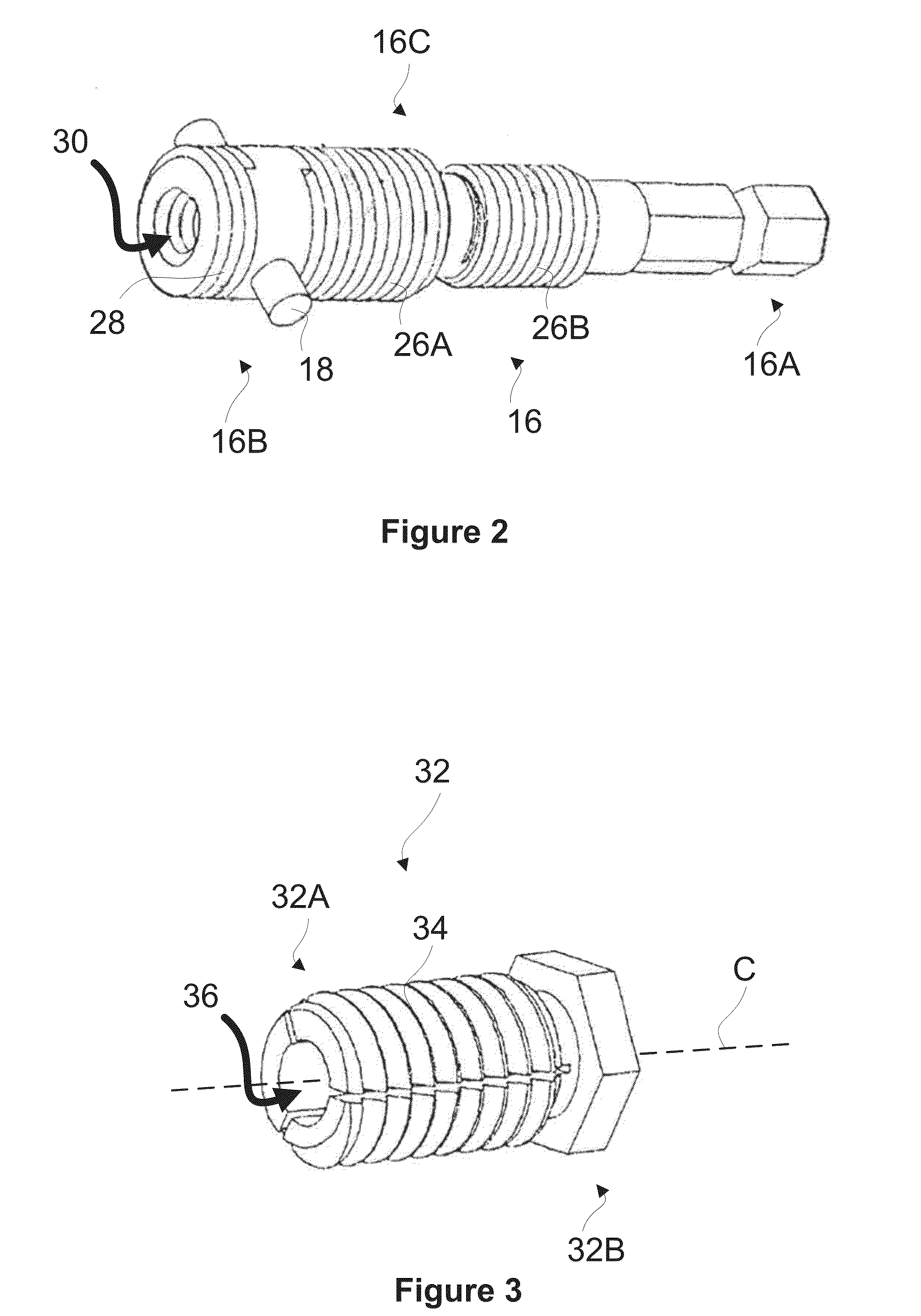Hole-Saw
a hole-saw and cutting tool technology, applied in the field of hole-saws, can solve the problems of wasting raw materials, wobbling between the parts of the type of hole-saw, etc., and achieve the effects of saving raw materials, saving raw materials, and being more economical to produ
- Summary
- Abstract
- Description
- Claims
- Application Information
AI Technical Summary
Benefits of technology
Problems solved by technology
Method used
Image
Examples
Embodiment Construction
[0042]FIGS. 1A-1B illustrate a hole-saw 2 according to one or more embodiments. The hole-saw 2 includes a cylindrical body 4, a plate 8, and a mandrel 16.
[0043]The body 4 has a first cutting edge 6 formed at a first end 4A of the body 4 that is open. This first cutting edge 6 is disposed about a rotational axis A of the body.
[0044]The plate 8 is disposed at a second end 4B of the body 4 different than the first end 4A. Although illustrated as separate from the body 4 in FIGS. 1A-1B for explanatory purposes, the plate 8 is rotationally coupled to the body 4 such that rotation of the plate 8 or the body 4 results in rotation of the other. The plate 4 is oriented perpendicular to the body's rotational axis A, as shown.
[0045]Notably, the plate 8 has lateral slots 10 formed through the plate 8. As shown in FIGS. 1A-1B, for example, the plate 8 has a single pair of lateral slots 10 that extend laterally, e.g., in opposite directions, from a circular hole through the plate's center. The pl...
PUM
| Property | Measurement | Unit |
|---|---|---|
| circumference | aaaaa | aaaaa |
| length | aaaaa | aaaaa |
| outer circumference | aaaaa | aaaaa |
Abstract
Description
Claims
Application Information
 Login to View More
Login to View More - R&D
- Intellectual Property
- Life Sciences
- Materials
- Tech Scout
- Unparalleled Data Quality
- Higher Quality Content
- 60% Fewer Hallucinations
Browse by: Latest US Patents, China's latest patents, Technical Efficacy Thesaurus, Application Domain, Technology Topic, Popular Technical Reports.
© 2025 PatSnap. All rights reserved.Legal|Privacy policy|Modern Slavery Act Transparency Statement|Sitemap|About US| Contact US: help@patsnap.com



